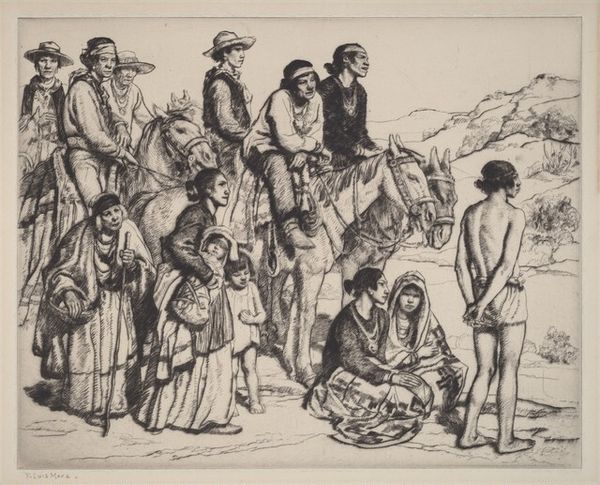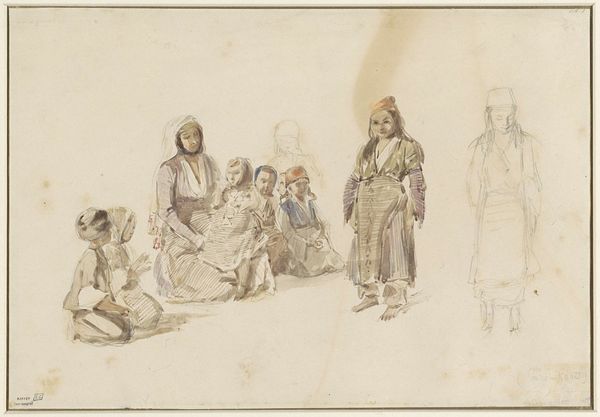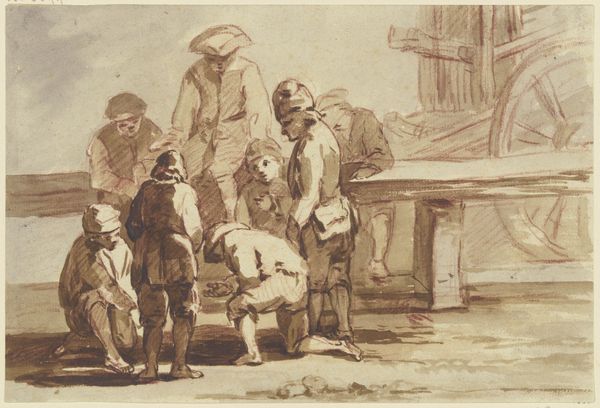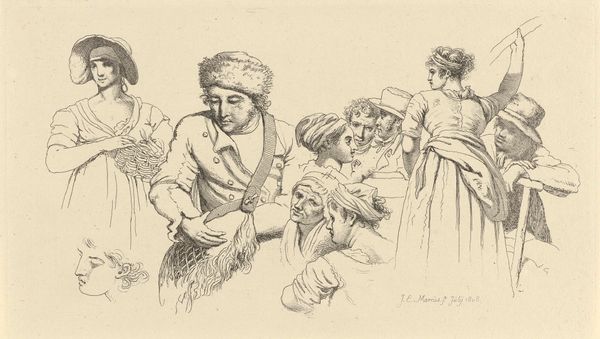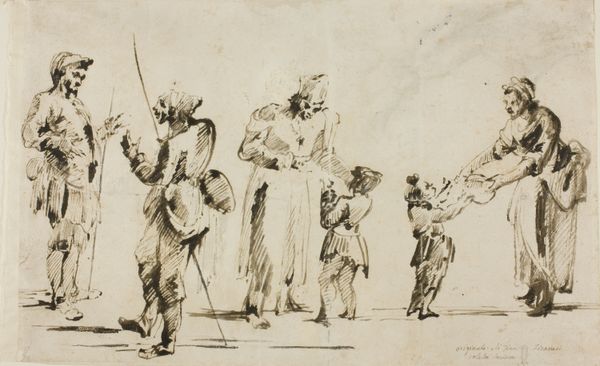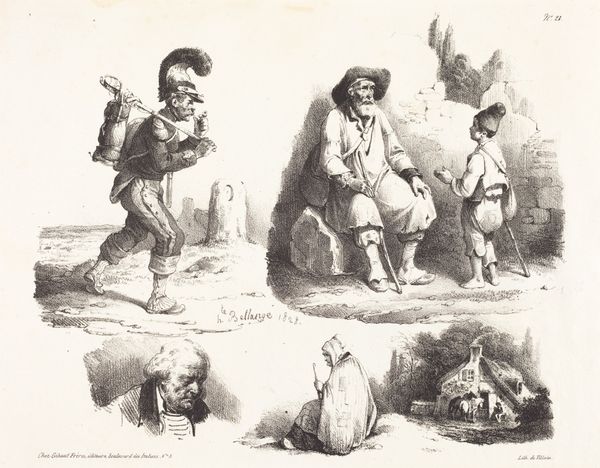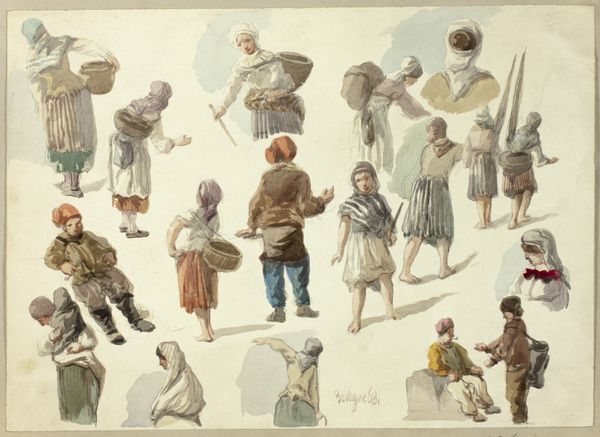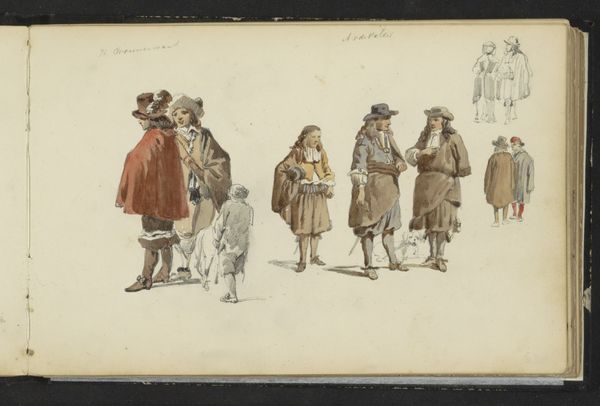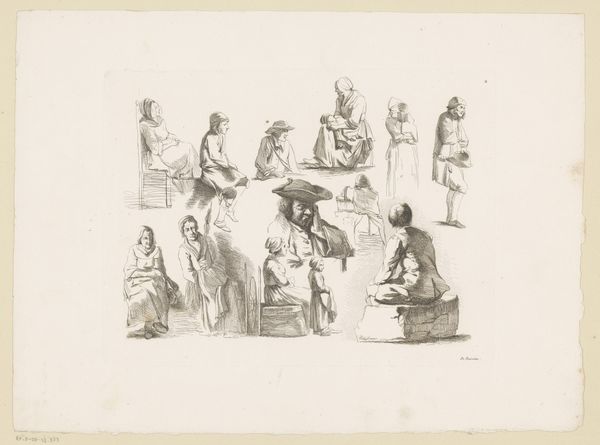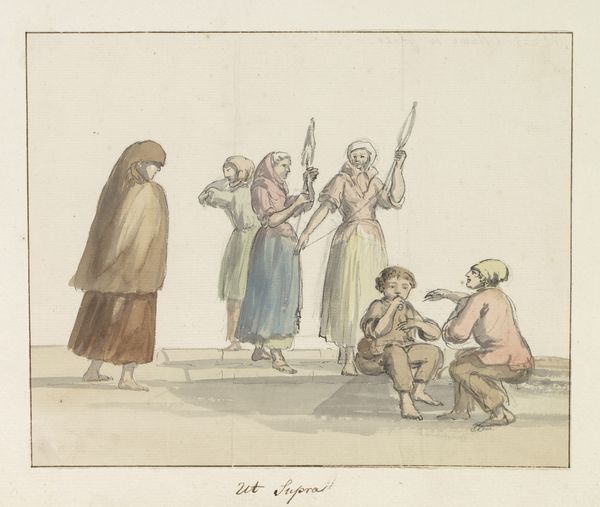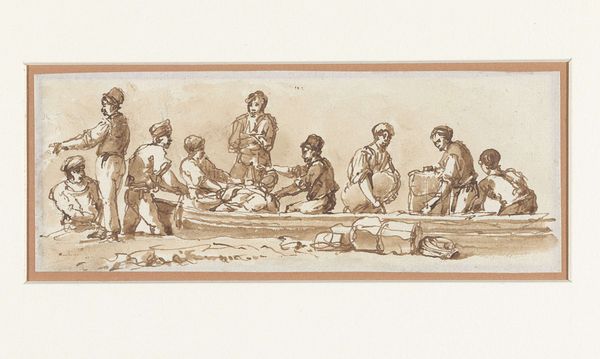
watercolor
#
portrait
#
landscape
#
charcoal drawing
#
figuration
#
watercolor
#
romanticism
#
genre-painting
#
watercolor
Dimensions: 15.6 x 22.1 cm
Copyright: Public domain
Curator: Rudolf von Alt's 1839 watercolor, "Galician Gypsies," immediately strikes me as quite tender, despite the obviously difficult circumstances it depicts. The muted colors contribute to this somber but delicate feeling. Editor: It is fascinating how Alt chooses to portray this community. The recurring motif of the draped cloth, almost shawl-like, acts as both clothing and a kind of protective armor. It definitely adds an element of vulnerability. The covering and uncovering becomes symbolic. Curator: Precisely. Observe how the woman in the center grounds the piece by facing forward, and appears to be clapping— a gesture that creates immediate dynamism. Her hands feel almost prayer-like. Editor: And notice that nearly everyone has their feet uncovered, emphasizing a rawness and connection to the land, while simultaneously alluding to their economic condition. There's a strong social commentary interwoven within this genre painting. Curator: It's also quite fascinating that von Alt, primarily known for his landscapes, would choose to focus on the figuration of a marginalized community. What could be the intended audience or the broader effect? Was the work meant to raise awareness, document a particular social stratum, or even exoticize these people? Editor: Alt positions these people within the Romantic movement of the 19th century. This is clear because it appears like an effort to depict 'authentic' peoples, while in doing so perhaps reinforces stereotypes that were held by Western societies during the time. Curator: These subtle aesthetic and symbolic nuances are intriguing. There's a tension between idealization and the reality of their lives which echoes sentiments within romanticism as well. We also should consider, the 'gypsy' figure as both the romantic 'outsider', and, in truth, the very real struggles these Romani people faced during this time. Editor: Right. It's a reminder that art is always a product of its time, reflecting not only the artist's vision, but also the prevailing attitudes and anxieties of society. Curator: Thank you for lending your sharp observations. These historical factors highlight just how multifaceted visual representations can be.
Comments
No comments
Be the first to comment and join the conversation on the ultimate creative platform.
